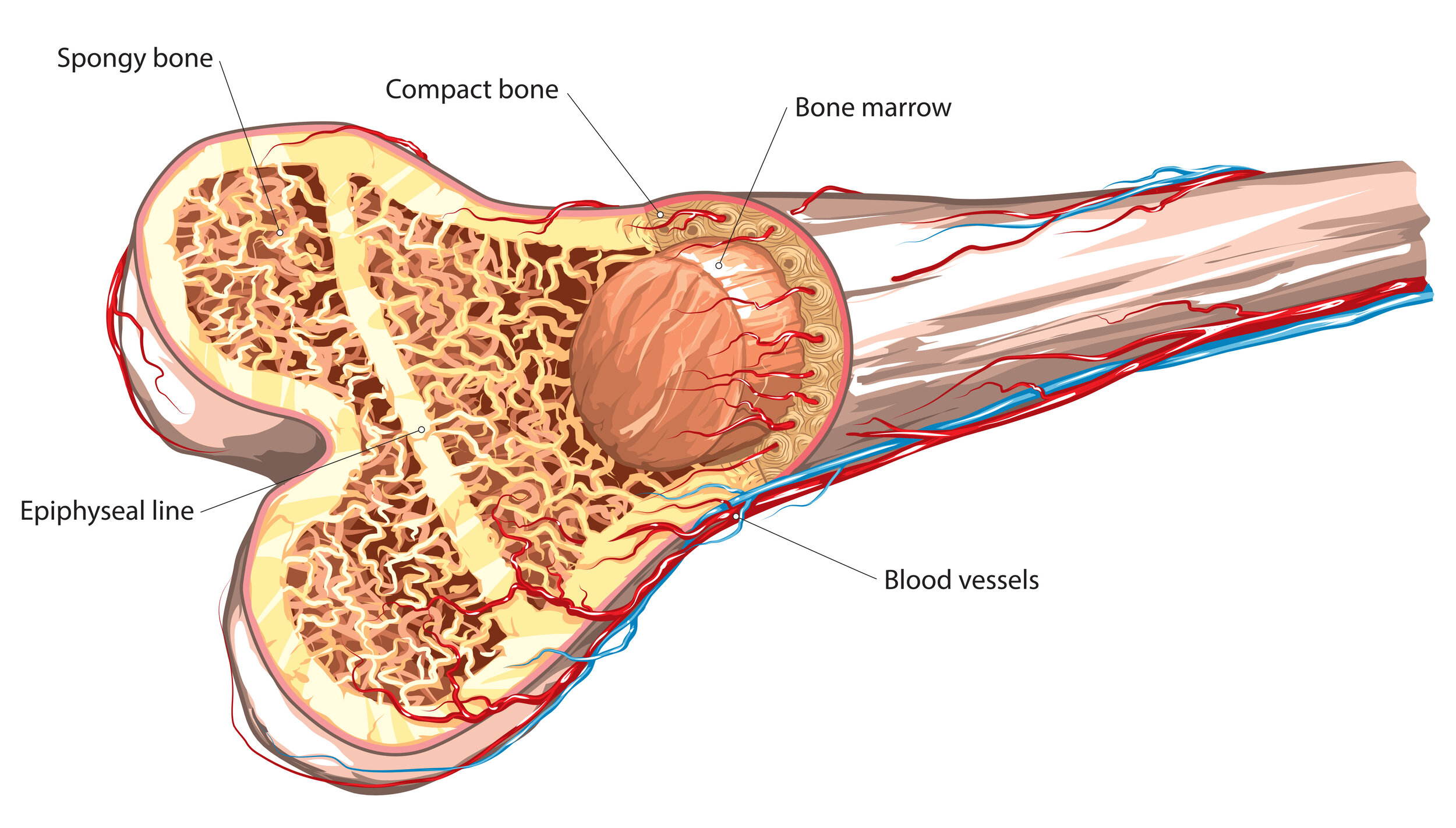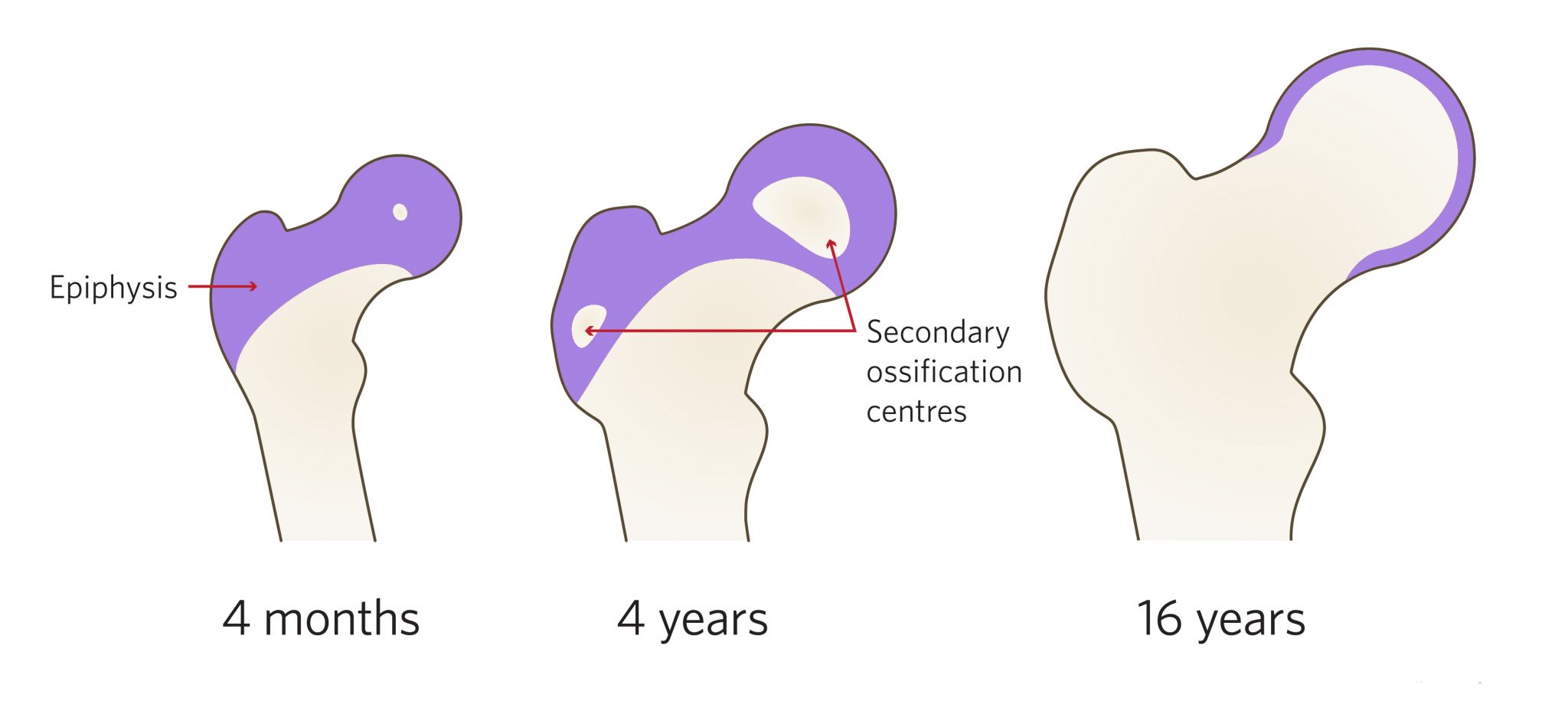The Skeletal System Study Guide
Introduction
Did you know your bones are actually alive? It makes sense when you think about it, but it’s still kind of freaky. Bones, along with cartilage and ligaments, are part of the skeletal system, our topic of the day. All three of these components work together to give our bodies structure, support, and movement, among many other functions. Let’s learn all about it below.
Lesson Objectives
- Understand the different parts that make up the skeletal system and their importance.
- Understand the functions of the skeletal system.
Bones
Let’s get down to the bare bones of, well, bones. When you think about the skeletal system, the skeleton itself is probably the first thing that comes to mind. After all, it is one of the most popular Halloween costumes around. Each bone of the skeleton is an intricate living organ made up of two main types of tissue: spongy bone and compact bone.

-
Spongy Bone fills the interior cavity of a bone and has a porous, honeycomb-like structure. Tiny holes called Pores are found within the spongy bone, and they often store a soft connective tissue called Bone Marrow. This specialized tissue is the place where new blood cells are formed within our bodies.
-
Compact Bone is dense and compact (bet you couldn’t have figured that out from the name) and surrounds the spongy bone. A tough membrane called the Periosteum covers and protects the outside of the bone, and is what gives it its shiny white appearance.
Cartilage
When a baby is born, many of its bones are made entirely of Cartilage, a dense, connective tissue made of protein fibers that render it tough yet flexible. As the baby grows up, much of this cartilage will be replaced by actual bone in the Epiphyseal Plate, a layer of cartilage where ossification occurs, the process by which new bone is produced.

Cartilage, unlike bones, contains no blood vessels or nerves. In adults, cartilage covers the ends of free-moving joints like the knee to cushion them and provide both flexibility and a smooth surface for movement, enabling your bones to move without friction.
Ligaments
Ligaments –bands of strong, dense connective tissue–also surround the joints in your knees, ankles, elbows, shoulders, and many more. They help hold structures in our bodies together and offer us stability.
If you play sports, you probably know someone who’s had an ACL injury. The ACL is the anterior cruciate ligament and is one of the key ligaments that stabilizes your knee, which is why you have to stay off your feet for a while when it gets sprained or torn (it also hurts like, a lot).
Skeletal System Functions
Now that we’ve talked about the general components of the skeletal system, let’s talk about some of the vital functions it serves. Together, our bones, cartilage, ligaments, and other tissues protect our organs, produce blood cells, allow us to move, store minerals, and offer our body both structure and support. Let’s unpack these below.
Protection of Internal Organs
Our bones surround our internal organs to support and protect them from injury. Your ribs guard your heart and your lungs, the vertebrae in your spine protect your spinal cord, and your skull shields your brain. Without these structures, it’d be pretty easy to cause some serious injury even from just a minor fall. (You’d also be a sac of skin and organs on the ground, but we don’t have to think about that right now).
Blood Cell Production
Certain bones in your skeleton like the pelvis, ribs, and femur contain bone marrow, the tissue in which blood cells are produced. Stem cells are also located in the blood marrow, which allow you to produce multiple different types of cells like red blood cells, white blood cells, and platelets.
Movement
Your bones also provide a framework for muscle and tissue attachment. When your muscles contract, they pull on your bones to move them, with joints helping the job. The bones, joints, connective tissues, and muscles all work together to allow for a great range of motion for both the body as a whole and its individual parts.
Mineral Storage
The skeletal portion of the system acts as a reservoir for calcium and phosphorus–essential minerals and nutrients for your body’s functionality. Bones contain more calcium than any other organ in the human body. When your blood calcium levels drop too low, the bones release the mineral back into the blood to maintain homeostasis.
Structure and Support
The bones and cartilage of your skeletal system compose the scaffold that supports the rest of your body. Without them, the human body would just be a bag of soft tissues (okay so apparently we do have to think about that now 😬). In terms of support, the large bones of your lower limbs for example support your body weight to help you stand and move to ensure that you don’t fall over when you stand up.
💡 Summary
-
The skeletal system is composed of bones, cartilage, and ligaments.
-
Bones are composed of two types of tissue: spongy bone and compact bone.
-
Compact bone forms the exterior of the bones and is surrounded by a tough membrane called the periosteum.
-
Spongy bone contains pores that store bone marrow.
-
Bone marrow is a specialized tissue in which new blood cells are formed.
-
Cartilage is a dense connective tissue composed of protein fibers that cushions our joints to allow for smooth, low-friction movement.
-
Ligaments are bands of strong, dense connective tissue that hold structures in your body together to keep them stable.
-
The skeletal system’s main functions are to protect internal organs, produce blood cells, allow movement, store minerals, and offer structure and support.
We hope you enjoyed studying this lesson and learned something cool about the Skeletal System! Join our Discord community to get any questions you may have answered and to engage with other students just like you! Don’t forget to download our App and check out our awesome VR room for this guide – we promise, it makes studying much more fun 😎
Sources
-
Biga. “6.1 the Functions of the Skeletal System.” Oregonstate.education, OpenStax/Oregon State University, 2019, open.oregonstate.education/aandp/chapter/6-1-the-functions-of-the-skeletal-system/. Accessed 25 Oct. 2021.
-
BBC. “Skeletal System – OCR – Revision 2 – GCSE Physical Education – BBC Bitesize.” BBC Bitesize, 2019, www.bbc.co.uk/bitesize/guides/zxc34j6/revision/2. Accessed 25 Oct. 2021.
-
“CK12-Foundation.” Flexbooks.ck12.org, https://www.flexbooks.ck12.org/cbook/ck-12-middle-school-life-science-2.0/section/11.6/primary/lesson/human-skeletal-system-ms-ls/. Accessed 2 Nov. 2021.
-
Cleveland clinic. “Skeletal System.” Cleveland Clinic, 19 Nov. 2019, https://www.my.clevelandclinic.org/health/body/21048-skeletal-system. Accessed 25 Oct. 2021.
